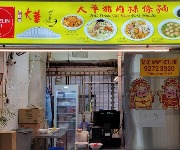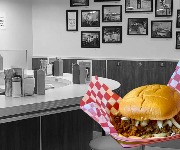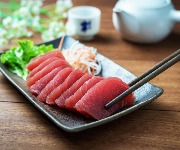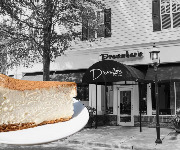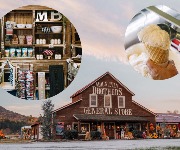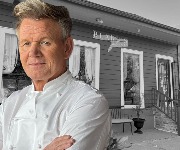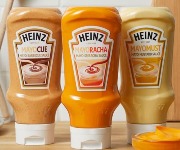Shopping for sustainable seafood with top chef Alan White
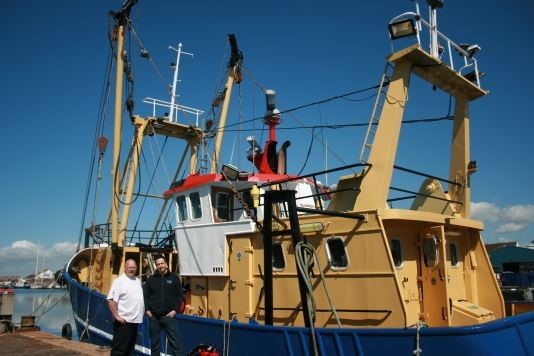
Matt Brady heads to Brighton in search of the catch of the day in the company of the Grand Hotel's top chef.
From sea to shore to plate, sustainability is a key issue when it comes to seafood. I headed down to Brighton to meet the Grand Hotel’s Executive Chef Alan White and accompany him on a trip to his main seafood supplier. I wanted to find out what's popular, what's not, and how the fishing industry remains sustainable.
Fishing in Brighton
Around 50 fishing vessels that operate in the waters between Poole and Eastbourne bring in their catches to the east end of Shoreham Harbour, which is where Brighton and Newhaven Fish Sales is based. This is where Alan sources the seafood for GB1, the Grand’s restaurant, and there's also a shop beside the warehouse which sells seafood to the general public.

The day starts at around 3am here, and the fish is prepped for delivery from 5am onwards to go out to destinations along the south coast and up as far as London.
At 10am when we arrive, there are boxes of fish laid out on the floor waiting to be packed up and sent off containing fat line-caught bass, glimmering mackerel, spotted sea trout and spiny black bream.
Most popular fish
The Dover sole is probably the fish most caught in the region, says manager Keir Foster, and he sells a huge amount of them. Interestingly, they are actually refrigerated for two days before being shipped out to chefs, as they are initially very hard and don’t taste as good. The lemon sole has now come into season too, and is also very popular.

Mackerel and black bream are popular with local chefs for the specials board, while grey mullet is a sustainable and relatively cheap option that also crops up on menus.
Cockles and clams are big at this time of year, as are whelks – but these don’t go down well with British folk on the whole. Instead, they’re sold to British processors who tin the sea snails and ship them to China. Not so eco-friendly perhaps, but they’re so popular there that the business can’t be turned down.
Caught but unwanted
There are also two large tanks inside the warehouse. One is full of crabs, the other rammed with lobsters. There are two types of edible crab common to the English coast, says Keir. The first is the brown crab, a favourite among chefs. The other, the common spider crab, is not popular. “Too much hard work,” chips in Alan, explaining that it takes a lot of effort to get the meat out of the spiny shell.
Fishermen aren't fans either. The crabs are virtually worthless since chefs don’t like them, but they have a habit of getting tangled in their nets and it can take around half an hour to remove each crab. Lobsters can be a pain too. If you've ever felt sorry for a lobster because his claws are bound up, you'll probably feel less bad when you know that they will kill and eat each other given the chance.

One of the lobsters in the tank is around 25 years old, estimates Keir, based on its size and the multitude of barnacles on its carapace. Fortunately for the lobster, Alan doesn’t want it because it’s so old: “It would be like eating old boots.”
Likewise, he has reservations about cuttlefish, which are being brought into the yard by the box load. When I ask Alan about whether cuttlefish is much different to cook than squid, he says that it’s a bit like the difference between octopus and squid; cuttlefish can be pretty tough. During the time it takes to get cuttlefish cooked and out to a customer’s table the quality would deteriorate to the point that he would no longer want them to eat it.
That’s a shame because, as Keir explains, cuttlefish is an eminently sustainable food. They move around the British coastline in a two-year cycle, laying eggs in their second year of life before coming into shore and dying.

It’s regular as clockwork, and fishermen know all about the routine. As the females have already laid their eggs in ‘nest’ sites by this point, there’s no logic in not catching them, as they will simply die anyway. So they load traps using female cuttlefish as bait to lure the males in.
Perhaps there is more scope in personal kitchens to experiment with cuttlefish. It certainly can be enjoyed, and if you’re a fan of cuttlefish and have your own method, do share it in the Comments at the bottom of the page.
Sustainability and regulations
We take a poke around inside one of the boats docked on the quay, the Sara Lena. The interior of the boat is what an estate agent might call 'cosy'. A boat of this size might stay out at sea for five or six days – a long time in such a cramped environment.
While you might expect trawlers these days to be fitted out with a huge amount of technology to aid in locating good fishing spots, director Bill Brock shows us that there are just four screens running in the bridge, all of which are used for navigation, not for detecting fish.

Though high-tech methods to do so are used on much larger vessels, Bill says that most fishermen rely on their expert knowledge of their local area, returning to places they’ve been successful in previous years.
In that way, less of the ocean is disturbed, as they’re not just trawling random spots in the hopes of getting lucky – and they also pay close attention to their methods. “It’s all about doing the appropriate thing in the appropriate part of the seabed,” says Bill.
This is good in terms of habitat preservation, but there are frustrating aspects of the business too. Bill explains that each boat has to have a quota paid for, which dictates the amount of fish that can be caught. This is very heavily policed, “and so it should be” he says, for the sake of sustainability.
However, he suggests that hundreds of tonnes of quota remains uncaught each year due to mismanagement amongst the politicians who govern the system, as it is a complicated system that is split between the four countries of the UK, adding up to a Total Allowable Catch (TAC).
If the quotas are not doled out evenly then the TAC is not taken advantage of. While this might be good in the long run for fish stocks, it's not great for fishermen facing unnecessary restrictions on their catch due to miscalculations when splitting up the UK's TAC.
The current rules, he comments, which stem from the Common Fisheries Policy of the EU, also benefit larger commercial fisheries who can apply for and afford the largest quotas, at the expense of smaller communities.

Meanwhile, some fish have a minimum landing size assigned to them, and any of the species under this limit should be thrown back into the sea. Some do not. For instance, the Dover sole has a minimum landing size of 25cm, but lemon soles can be landed at any size. However, individual lemon soles cannot then be marketed if they weigh under 180g, which seems quite backwards.
So there are some real discrepancies in the fishing industry that don’t seem to make a whole lot of sense. The fishermen themselves aren't opposed to sustainable practices, because it's what keeps them in a job. But the way the system is managed and the red tape causes difficulties.
Or as Bill puts it: "Politics is the worst part of our industry."
In the conclusion of this two-part special, Matt heads to the Grand’s kitchens to get an education on cooking fish and shellfish with Alan.

You might also like:
More sustainable fishing on the horizon
Most Recent
Comments
Be the first to comment
Do you want to comment on this article? You need to be signed in for this feature
